With this guide to visit the Tayrona Park you will find useful information for your trip, location, how to get there, entrance fees, information on the best beaches, hiking, landscapes and biodiversity, are some of the highlights of the Tayrona Natural Park.
If you are a lover of beaches, hiking and nature, Tayrona Park will surely be a tourist destination you will not forget.
The word Tayrona is a very special name given to this natural park, since this destination was a territory that was inhabited in the past by the Tayrona Indians who lived many years ago (100 AD to 1600 AD) in the Sierra Nevada de Santa Marta.
Many of the park’s internal trails have visual information about the cosmovision of this representative indigenous culture, which after the Spanish persecution at the time of the conquest, hid in various parts of the Sierra Nevada de Santa Marta, giving rise to the 4 Indigenous Ethnic Groups that prevail today in these territories (Koguis, Wiwa, Arhuacos and Kankuamos).
Where is Tayrona National Park?
- 1 Where is Tayrona National Park?
- 2 Tayrona National Park Location
- 3 How to get to Tayrona Park from Santa Marta?
- 4 How to get to Tayrona Park from Bogotá?
- 5 How to get to Tayrona Park from Cartagena?
- 6 Tayrona Park Entrance Fees 2024
- 7 How to Buy Tickets to Tayrona Park?
- 8 What to do in Tayrona Park
- 9 Recommendations for traveling to the Tayrona Natural Park
- 10 What to bring to Tayrona Park?
- 11 Best time of the year to go to Tayrona Park
- 12 Why the Closure of Tayrona Park?
- 13 It is prohibited in Tayrona Park
A few kilometers from the urban center of the city of Santa Marta is one of the most important natural parks in Colombia; located in the north of the department of Magdalena, between the foothills of the Sierra Nevada de Santa Marta and the Caribbean Sea.
The PNNT is one of the most popular tourist destinations in Colombia, it is located near the city of Santa Marta, so it is easy to reach by private or public vehicle.
The best this park has to offer is the opportunity to experience nature tourism, ecological hikes to the beautiful beaches and dense rainforest, El Tayrona is a must for domestic and foreign travelers visiting Colombia.
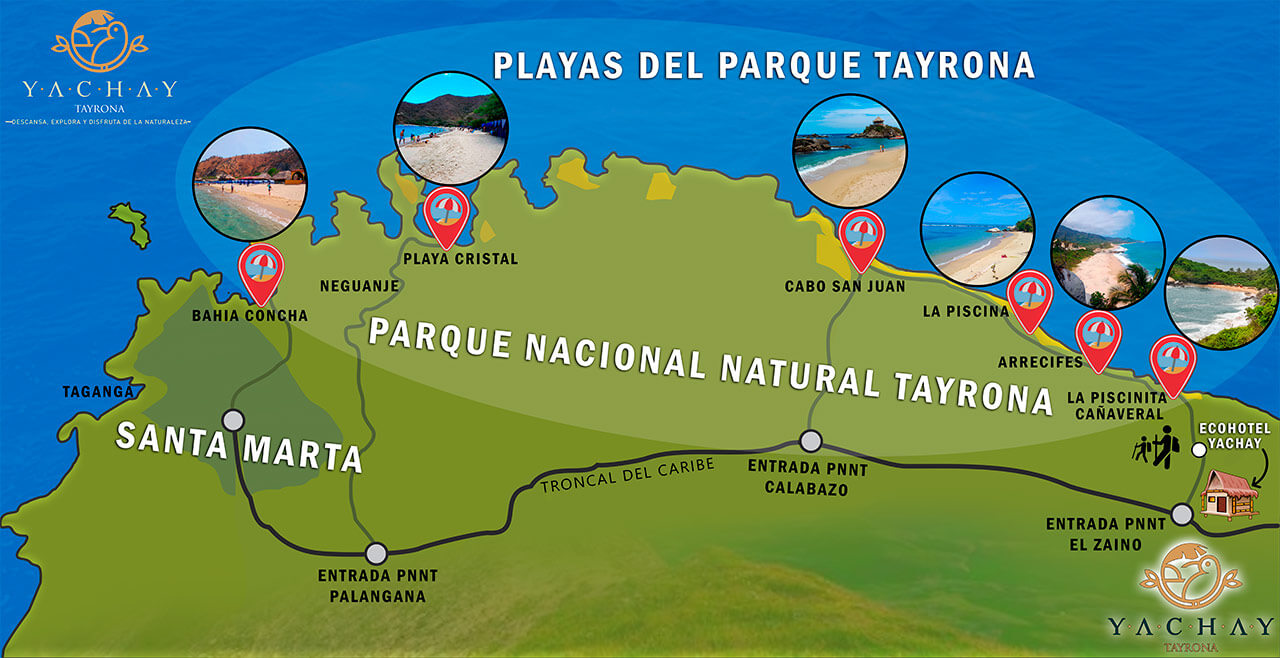
Tayrona National Park Location
It is located on the north coast of Colombia, in the city of Santa Marta. the Tayrona National Natural Park has 4 tourist entrances which are Bahía Concha, Palangana, Calabazo and Zaino entrance. these entrances are distanced from each other in Santa Marta, being the entrance of Bahía Concha (12km approx.) the closest to the city and the entrance of Zaino (40km approx.) is the most distant.
Tayrona National Park Entrance - Bahía Concha
(12 km by car from the center of Santa Marta)
Bahía Concha is a beach in the Tayrona National Park, famous for its spectacular cliffs, crystal clear waters and white sand beaches; it is very easy to access, it is the closest Tayrona beach to the city, making it a favorite destination for Samarians and an access point to outstanding beaches such as Waikiki and Bonito Gordo.
Visitors can enjoy many tourist activities such as hiking, swimming, diving, sunbathing and even camping; there are several accommodations, restaurants and bars in the area, making it the perfect place to relax.
Tayrona National Park Entrance - Neguanje
(30 Km by car from the historic center to Neguanje)
Playa Cristal is located within the Tayrona National Natural Park, and to get there, travelers take a public or private vehicle to the sector of Neguanje, passing through the Caribbean trunk road and then turn off by trail to the entrance of the PNNT Palangana, the viewpoint of seven waves, the entrance of Gairaca and Playa del Amor.
In Neguanje, take the boat to Cinto or Playa Cristal, also called Playa del Muerto, where swimming and snorkeling is the best. this beach of the Tayrona Park is located after Neguanje and is one of the best beaches in Santa Marta, como su nombre lo dice, as its name says, the crystal clear waters are characterized by turquoise blue and white coral sands that make this destination the best for your summer vacation.
Entrance to Tayrona National Park - Calabazo
(25 Km by vehicle from the historic center to the entrance of Calabazo)
Calabazo sector, this entrance to the Tayrona National Natural Park is little known, since the access to the beaches in this area is very distant, as far as trekking is concerned.
Along this trail you will reach Cabo San Juan, passing through the Pueblito Kogui (Chayrama) or if the traveler wishes, you can visit the nudist beach or Boca del Saco, a beautiful beach hidden in the Tayrona National Park that has nothing to envy to any beach in the world where you can enjoy the sun, sand and sea, as well as good company.
Entrance to Tayrona National Park - El Zaino
(40 Km by car from the historical center to the entrance of Zaino in Cañaveral.)
This entrance of the Tayrona Park is the most visited annually by tourists from all over the world, since it is the main point of activities such as hiking to the beaches, horseback riding and wildlife watching.
From here you can take the ecological trekking routes to the best beaches of the Tayrona Park, such as the Cañaveral pool, the Arrecifes pool and, finally, Cabo San Juan del Guía, a favorite destination for tourists, mostly foreigners, to camp for several days on this paradisiacal beach in the Colombian Caribbean.
Within this sector of Cañaveral we find hotels and ecotourism lodges such as the Eco Hotel Yachay Tayrona, a renowned lodging, where the main attraction is the direct interaction with nature and comfort.
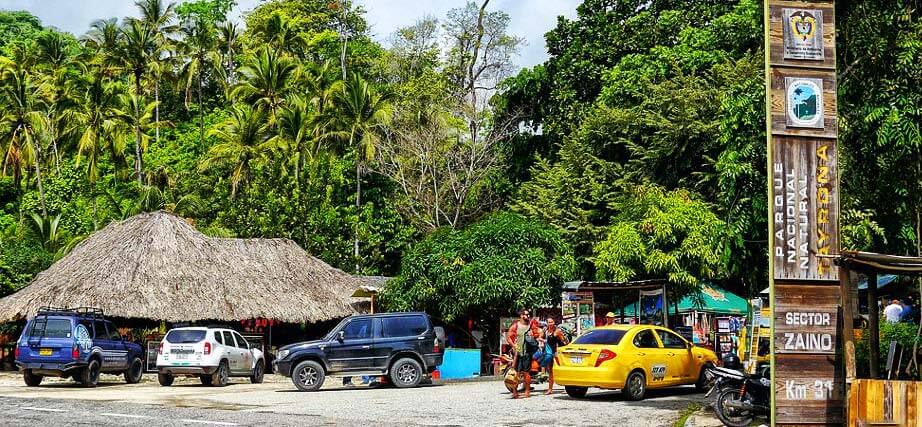
How to get to Tayrona Park from Santa Marta?
In this section we refer to the entrance of the Tayrona Park, in the Zaino sector.
Taking into account that you have just arrived in Santa Marta or you already have days visiting the pearl of the Caribbean, there are three ways to get to the Tayrona Park in the Zaino sector and Cabo San Juan.
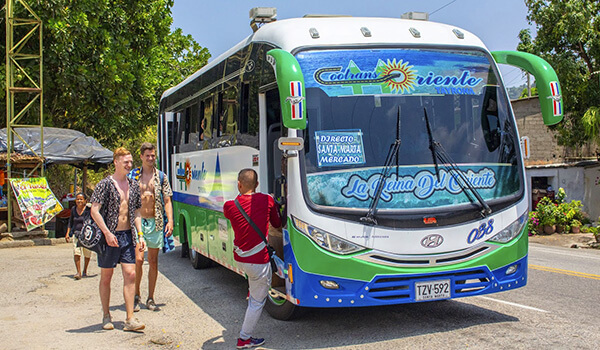
Private Transportation
Go to the Public Market in the center of Santa Marta and there buses leave every 20 minutes to the Zaino entrance in the Tayrona Park.
Approximate Cost: $10.000 COP Duration: 1 hour and 30 minutes
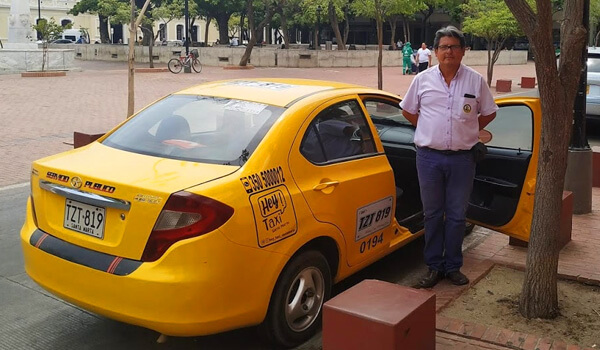
Public Transportation
Request a Taxi Service to travel comfortably from the Airport to the Zaino in Tayrona Park.
Approximate Cost: $180.000 COP Duration: 1 hour and 45 minutes
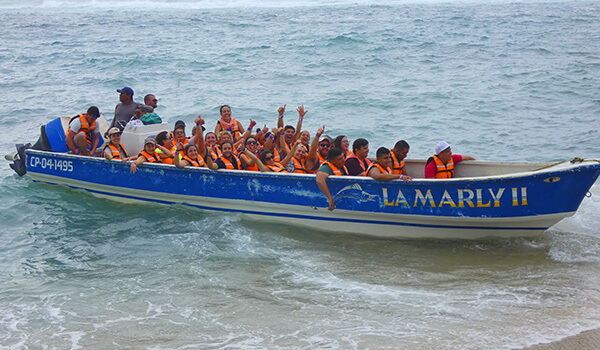
Boat Service
Arrive at the town of Taganga and from there take a boat to the best beach in Tayrona National Park, Cabo San Juan.
Approximate Cost: $80.000 COP Duration: 1 hour approx.
How to get to Tayrona Park from Bogotá?
To get to Tayrona Santa Marta Park from Bogota there are two ways to get there; land or air transportation, taking into account that the trip by road is (970 Km – 18 hours approx.) and by plane only (744 Km – 1 hour approx).
When you arrive in Santa Marta, the only thing left to do is to travel by bus or private transport to one of the beaches of Tayrona Park; the transport service to the different entrances of Tayrona, usually leaves from the public market of Santa Marta, so you must travel to this point.
How to get to Tayrona Park from Cartagena?
Cartagena de Indias is a Caribbean destination located very close to Santa Marta, so it is very common to see the flow of tourists moving between these two tourist cities.
In this case, we are going to show you several ways to go to Tayrona National Park in Santa Marta from Cartagena by road.
Public Transportation: there are several companies that offer this standard service through national buses, the journey takes about 5 hours to Santa Marta and being in the pearl of the Caribbean, you move to the public market, where buses leave for all the entrances of the Tayrona Natural Park.
Private Transportation: This special door-to-door bus service is provided by some companies that are only dedicated to the tourism sector, which means that they will pick you up at your hostel or hotel in Cartagena and drop you off at the Tayrona Park directly; the trip takes approximately 4 hours.
You can also choose to take a cab from Cartagena de Indias to Tayrona in Santa Marta, but we believe that the price does not compensate the previous options that are just as fast and less expensive.
Tayrona Park Entrance Fees 2024
ENTRANCE FEE TO TAYRONA PARK
TAYRONA PARK RATES – LOW SEASON
National or Foreigner resident in Colombia or member of the CAN (older than 5 years old up to 25 years old)
$24.500 COP
Adult National member of the CAN or Foreigner resident in Colombia (over 25 years of age)
$33.000 COP
Foreigner
Non-resident in Colombia or member of the CAN
$73.500 COP
Born in Santa Marta
(Older than 5 years old up to 25 years old)
$12.500 COP
Born in Santa Marta (Over 25 years old)
$16.500 COP
Insurance
$6.000 COP
TAYRONA PARK RATES – HIGH SEASON
National or Foreigner resident in Colombia or member of the CAN (older than 5 years old up to 25 years old)
$27.500 COP
Adult National member of the CAN or Foreigner resident in Colombia (over 25 years of age)
$39.000 COP
Foreign
Non-resident in Colombia or member of the CAN
$87.000 COP
Born in Santa Marta
(Older than 5 years old up to 25 years old)
$27.500 COP
Born in Santa Marta (Over 25 years old)
$39.000 COP
Insurance
$6.000 COP
TAYRONA NATIONAL NATURAL PARK – ENTRANCE FEE CHARGED
AUTOMOBILE
$19.000 COP
MICRO-BUS
$48.500 COP
BUS
$102.500 COP
MOTORCYCLES
$13.500 COP
These rates are subject to change depending on the actions you take National Parks of Colombia.
The countries that make up the CAN are: Bolivia, Colombia, Ecuador and Peru.
How to Buy Tickets to Tayrona Park?
ENTRANCE TO TAYRONA PARK – EL ZAINO
Here we inform you how to buy entry tickets to Tayrona Park, first of all you must arrive in advance at the entrance to the Zaino Tayrona Park because the ticket office is often full of travelers who want to buy tickets, it all depends on the season.
There are several ways of payment to buy the manilla (entrance ticket) at the entrance of the Zaino Tayrona, you can pay with cash, debit or credit card, but remember one thing, that the Tayrona Park Zaino sector has a limited number of tickets sold per day (carrying capacity).
The majority of national and foreign visitors who travel to Tayrona Zaino sector get up early in the morning to get in line to purchase tickets to Tayrona Park, since until 2024 the website of the National Parks of Colombia is not yet available to book tickets online.
IF YOU BOOK ACCOMMODATION IN OUR ECO HOTEL YACHAY TAYRONA, WE CAN PURCHASE YOUR TICKET FOR YOU.
Send us to our email yachaycomercial@gmail.com, your passport or scanned document, the number of people who will enter, day of entry and approximate time of arrival.
The entrance fee to PNN Tayrona is not included in the lodging rate and the cost of the procedure for each ticket is $8,500 COP. At the time of entry, a hotel staff member will be waiting for you at the entrance with the tickets.
What to do in Tayrona Park
ENJOY ALL THE TOURIST ACTIVITIES
Among the things to do in Tayrona Park are ecological hikes, natural attractions and beautiful beaches that are perfect for hiking, bird watching and other activities.
If you are looking for a stunning natural destination to add to your travel itinerary, look no further than Tayrona National Park in Colombia; this natural destination is famous for its stunning white sand beaches and crystal clear water, breathtaking scenery with hiking trails.
Here in the Tayrona National Park are all the eco-tourism activities you need for your next vacation, a unique destination in Santa Marta.
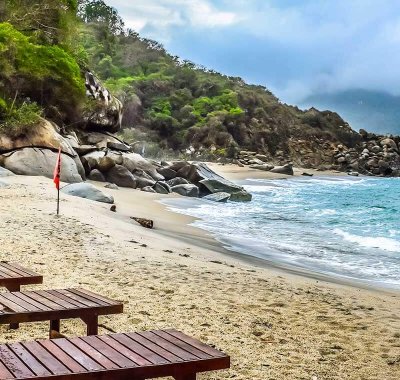
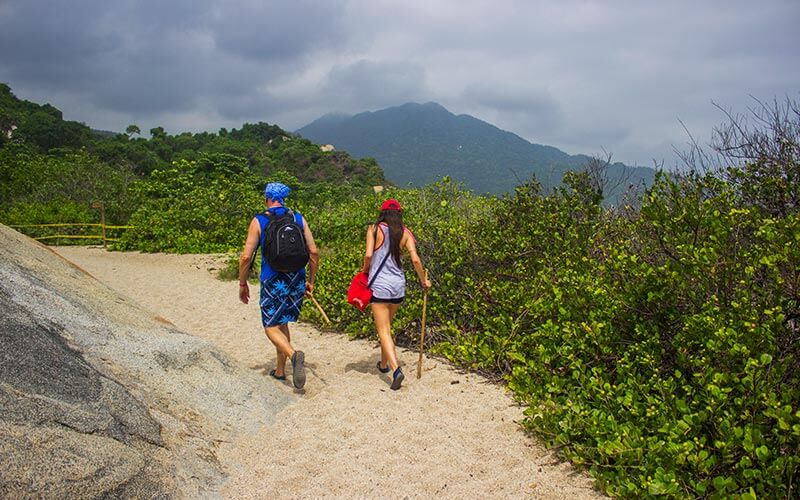
Trekking or Hiking
If you like hiking, Tayrona is a must-see. With more than 30 kilometers of ecological trails, there are routes for all levels of fitness; from easy walks through the rainforest to more challenging hikes through the mountains and sand to the beaches.
Yachay Tayrona is located in Zaino, a perfect place for first time visitors to Tayrona, as it will allow them to visit a larger number of beaches and enjoy the wonderful ecological trails.
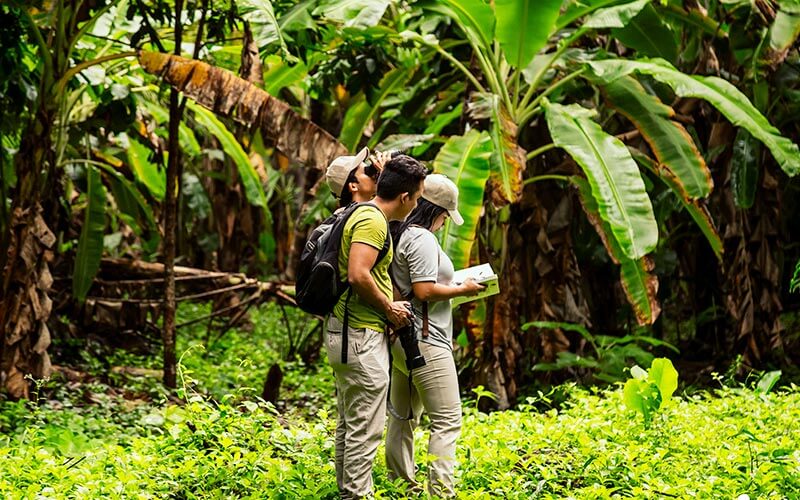
Wildlife Sightings
Tayrona National Park is home to an incredible variety of plant and animal life, over 200 species of birds have been seen in the park, as well as monkeys, sloths, the Oropendola, the Eagle, the Clown Toucan, the White-tailed Hummingbird, the Curucutú Owl, the Bull’s Blood, the Crested Woodpecker, lizards and marine species.
The best way to see wildlife is on a guided tour with an expert who can help you spot animals in their natural habitat, the scenery is breathtaking, you might even see some wildlife along the way!
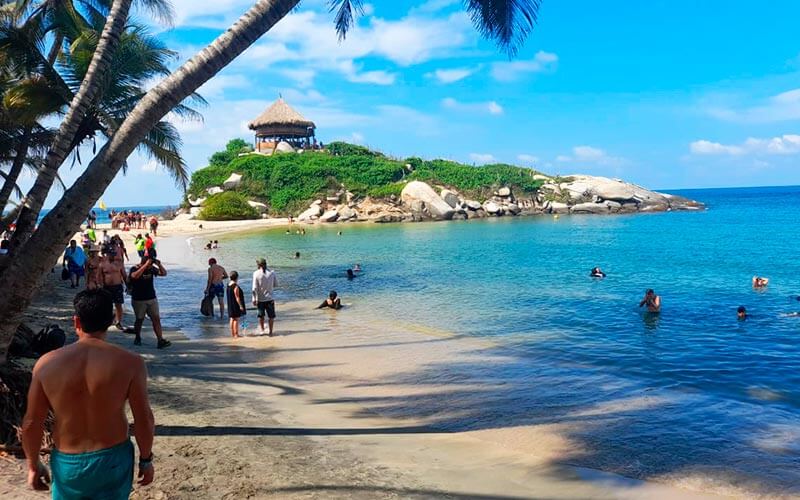
Visit to the Beaches
The beaches of Tayrona National Park are some of the most beautiful in Colombia, with crystal clear waters and soft white sand, they are the perfect place to relax and enjoy the incredible views.
You will be able to observe beaches such as La Piscinita, Arenillas, Arrecifes, the Natural Pool, Cabo San Juan and the Nudist Beach or Boca del Saco; On the beaches of Arrecifes and the Nudist Beach it is not advisable to bathe, since the waves are very strong in this area.
In Cañaveral, the only beach suitable for swimming is Piscinita, it is worth mentioning that it is only a 15 minute walk (2 km) from the parking lot of Cañaveral, within the Tayrona National Park, which is where the hiking and horseback riding activities begin.
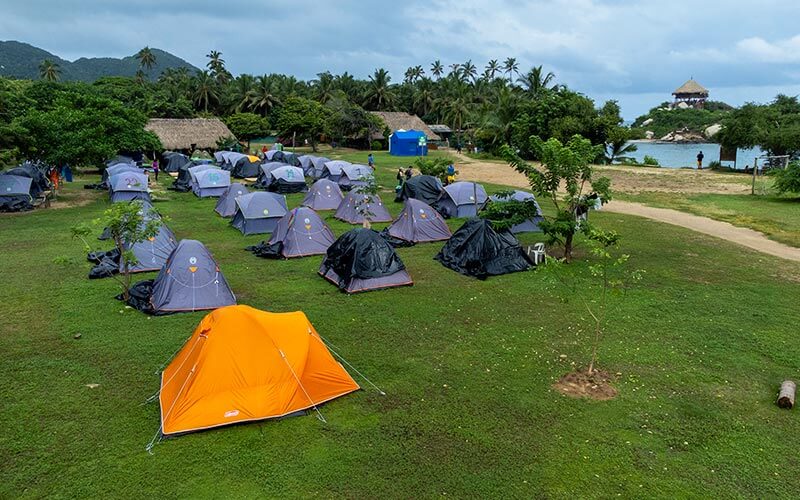
Camping in Tayrona
Tayrona Park is the perfect place to camp in Colombia, with its beautiful scenery and diverse wildlife, it is the perfect destination to get away from it all and enjoy nature.
There are several camping options available to you in three main areas within the park: Canaveral, Reefs, and Cape San Juan, each with several facilities with different features and amenities.
When it comes to finding the perfect campsite, research is key; Tayrona Park is vast, with many different camping options, so it is important to know what you are looking for before you arrive based on location, amenities and group size.
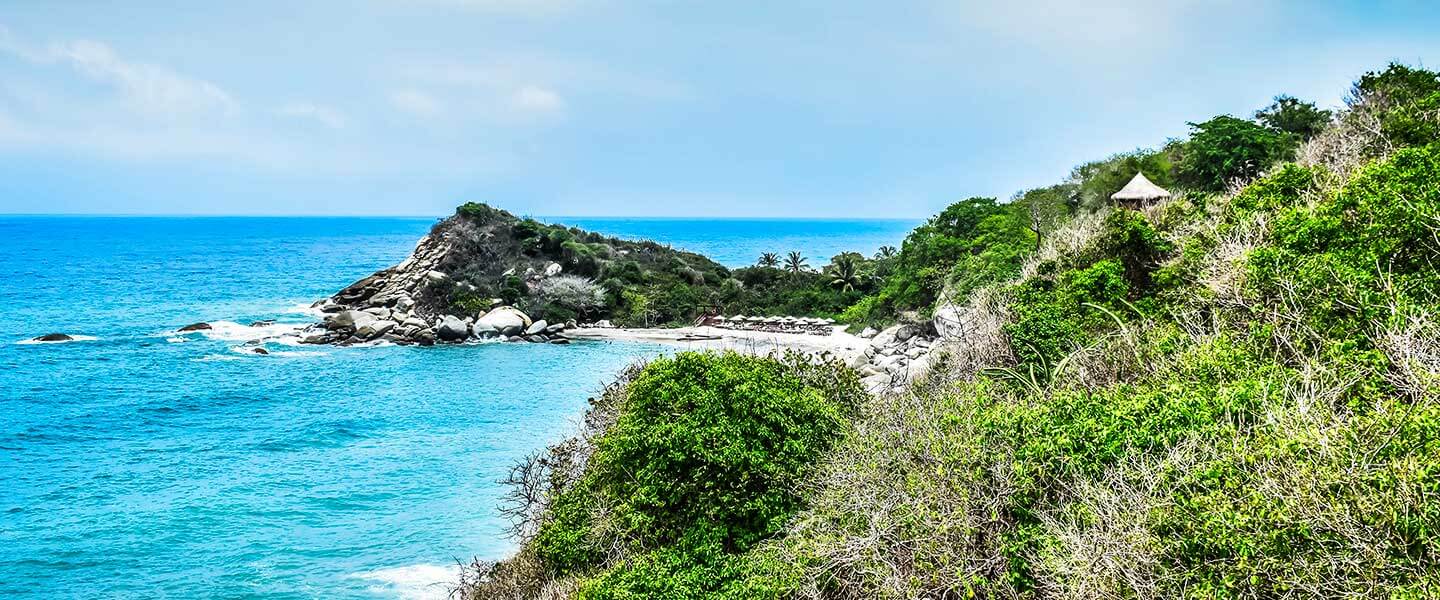
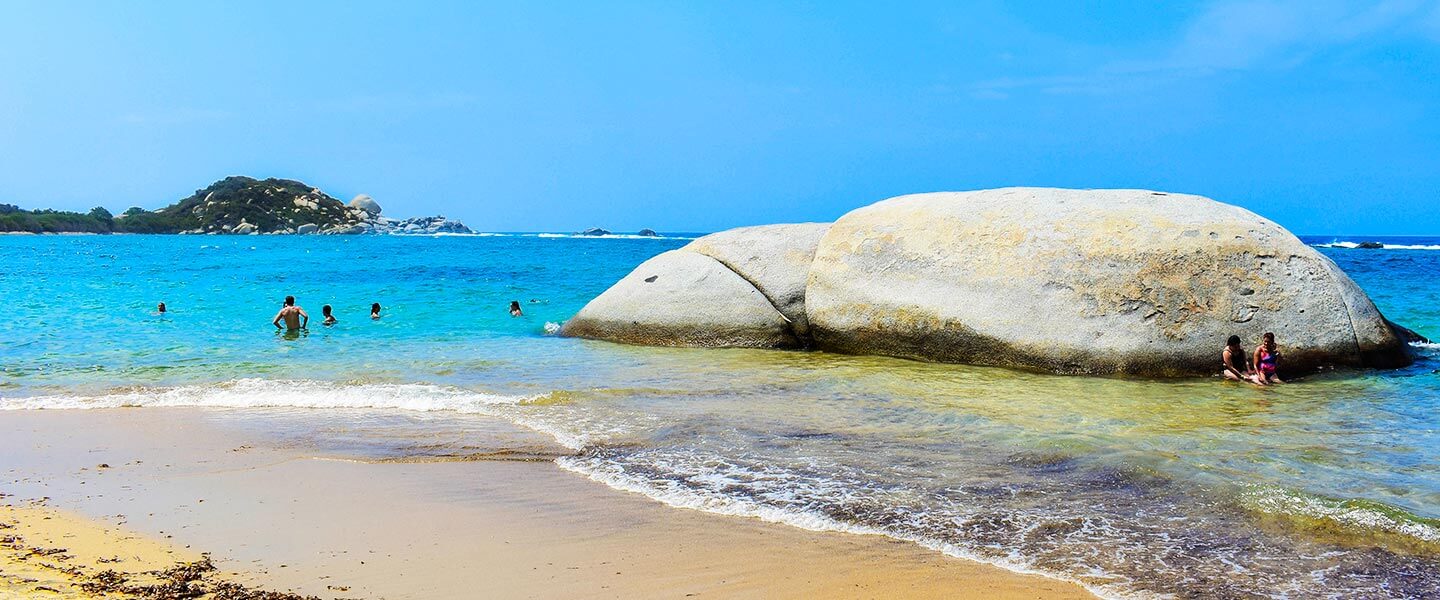

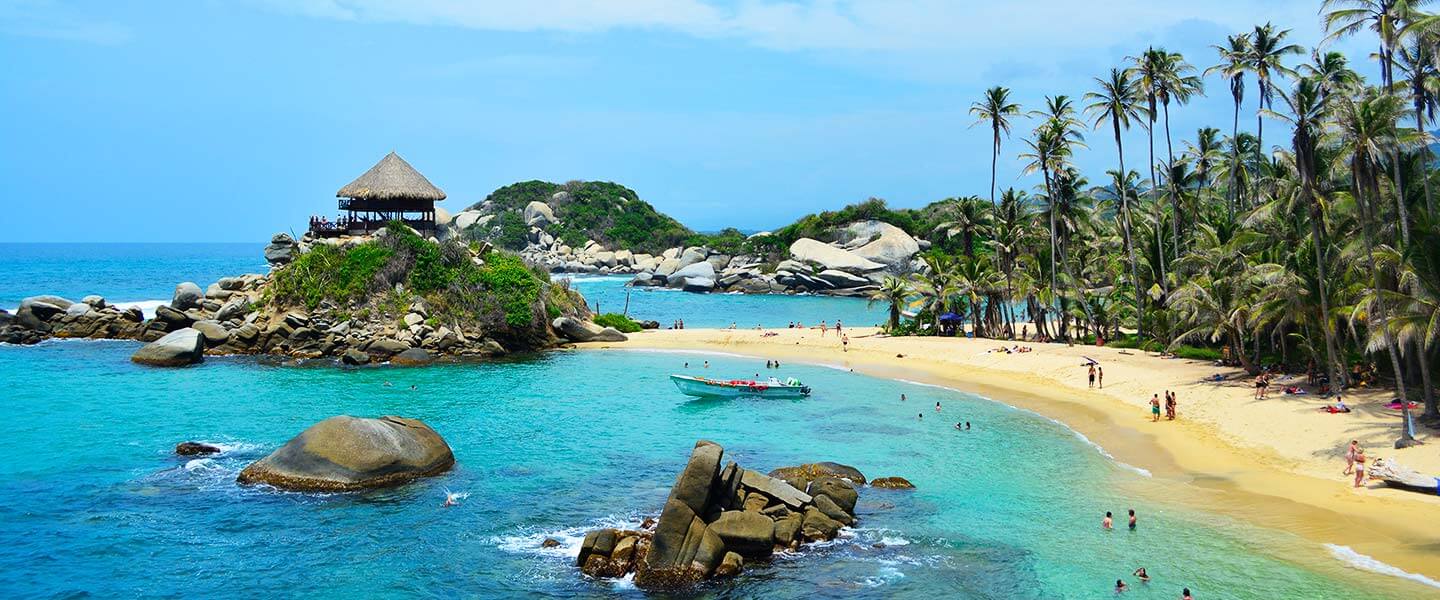
Recommendations for traveling to the Tayrona Natural Park
ENTRANCE HOURS TO TAYRONA PARK ZAINO SECTOR
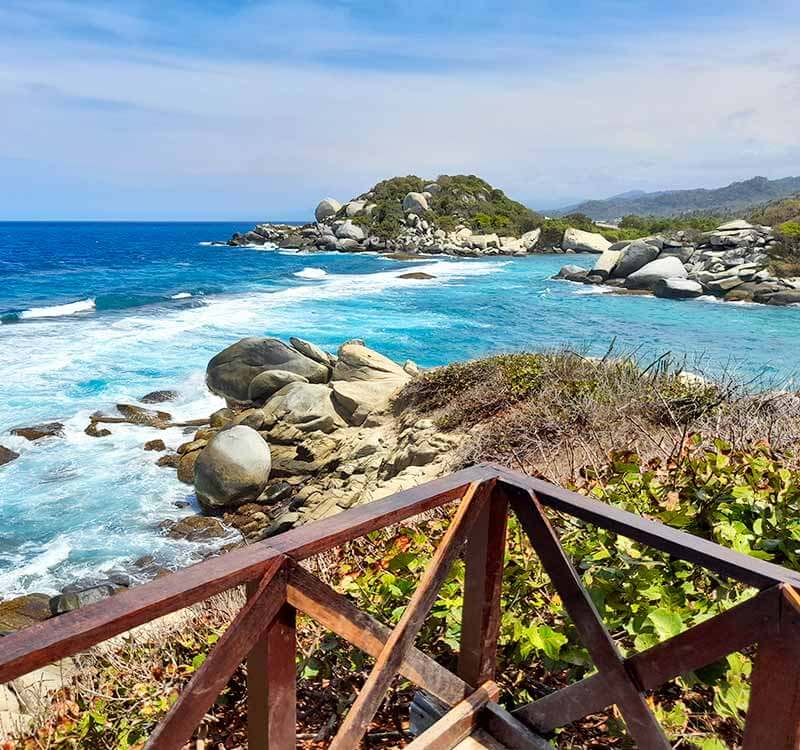
Tayrona Park hours to enter through the Zaino is from 7:00 am – 12:00 pm, if you arrive after this time, you may not be allowed to enter, so try to enter early, the departure time is between 2:00 pm and 5:00 pm.
The daily carrying capacity of Tayrona Park Zaino sector is 6,900 tourists; After the pandemic, this daily capacity was reduced per day. “We remind that National Parks of Colombia are in charge of estimating the carrying capacity of Tayrona.”
Tayrona is home to many different species of plants and animals, some of which are in danger of extinction; it is important to respect the park’s rules to protect these species and their habitat, including staying on designated trails, not touching or disturbing any plants or animals, and not littering during your visit.
What to bring to Tayrona Park?
Documentation: All tourists visiting the Tayrona Natural Park, without exception, must present identification documents (citizenship card, identity card, birth certificate, passport or ID card).
Vaccines: It is advisable to get the Covid-19, yellow fever and tetanus vaccines for the Tayrona National Natural Park, at least 15 days before the trip.
Clothing and articles: Bathers should pack plenty of sunscreen, insect repellent, hat, sunglasses, flashlight, camera, comfortable walking shoes, as well as a beach towel and bathing suit.
It is also a good idea to pack snacks and drinks, since there are no food vendors on the beaches, it is recommended that the products are biodegradable, reusable plastic, aluminum or glass containers to carry your water.
Cash: Inside the Tayrona National Park there is no way to withdraw cash and sometimes the signal for card payments is bad, due to the location.
Be prepared for the weather: Tayrona National Park is located in a tropical climate, so it is important to be prepared for hot and humid weather, as well as possible rain. Be sure to pack light, breathable clothing that will help keep you cool as you hike.
Best time of the year to go to Tayrona Park
The recommendation is to visit the park when there are not many tourists visiting this destination, which means that the best time of the year is undoubtedly during the low season, when there is not a massive amount of visitors.
In recent years, the climate has changed drastically, for this reason it is no longer so easy to determine the best time to visit the Tayrona National Natural Park.
The rainy season in Tayrona Park is between April and mid-June, and also between September and November, however, it is possible to carry out activities without problems because rain is almost always eventual, which allows visitors to continue enjoying the park every month of the year.
Why the Closure of Tayrona Park?
The Tayrona National Natural Park is always open, except for three rest periods per year. During this time, the indigenous people of the Sierra Nevada de Santa Marta perform spiritual rituals in sacred places, so that nature can renew itself.
Also during these closure dates, National Park officials carry out cleaning and research activities on the native species that inhabit the Tayrona Natural Park.
TAYRONA PARK CLOSING DATES 2024
From February 1 to February 15.
From June 1 to June 15.
From October 19 to November 2.
It is prohibited in Tayrona Park
The actions that are prohibited within the protected areas of the National Natural Park System are established in order to prevent negative impacts on the natural and cultural values that are protected (Decree 622 of 1977, Res. 0234 of 2004).
- Entering by sea to areas not authorized by DIMAR.
- Provoking and participating in scandals.
- Use aerosols or contaminating elements.
- Introduce plastic bags or plastic bags (Circular 01 of 2010).
- Dumping garbage or waste in places not authorized for this purpose, or incinerating them.
- Entering with alcoholic beverages and/or psychoactive substances; as well as firearms.
- Transit with vehicles at more than 30 Km/h.
- Introducing and/or using polluting substances that may disturb ecosystems.
- Make bonfires, these can cause forest fires, do not use candles.
- Transit with vehicles outside the established schedule and route.
- Parking vehicles in unauthorized places.
- Do not bring your vehicle into the camping area.
- Cooking or smoking inside Tayrona National Park.
- Extract biological material (fauna, flora, rocks, coral remains, shells, etc).
- Hunting, fishing, excavation and logging of any kind.
- Providing food to wildlife, which alters their natural behavior.
- Introducing domestic animals or plant material. This can transmit diseases and lead to the extinction of a native species.
- Entering and/or camping in unauthorized places, causing damage to facilities, altering, modifying or removing signs, notices, fences.
- Altering the properties of the sand on the beaches and disorienting turtles that arrive during the nesting season..
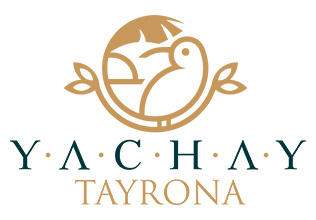
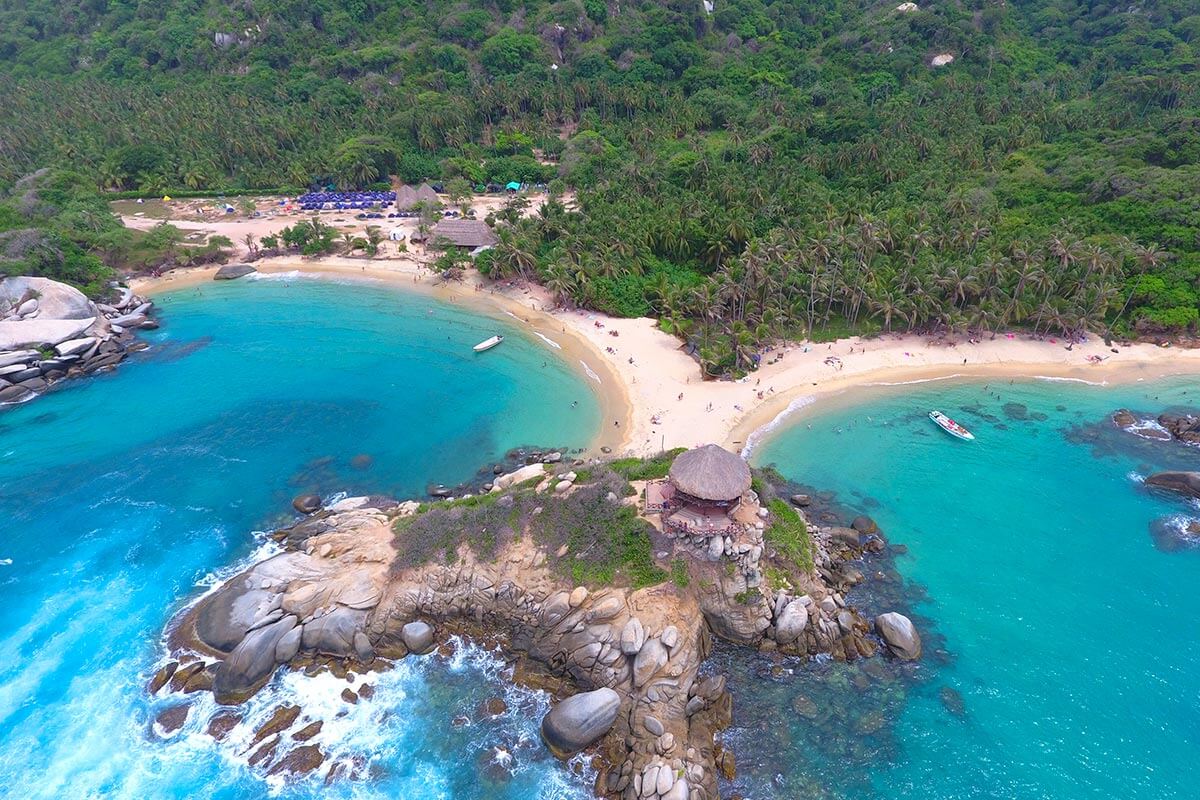
I am not vaccinated does it mean i can not enter Tayrona National Park?